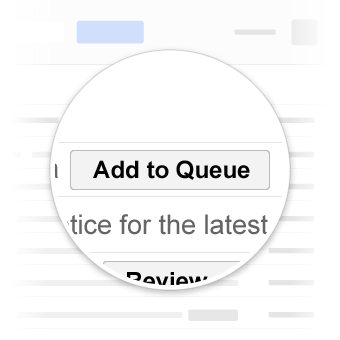If you’re getting into SEO, then you will probably hear a lot about Structured Data. It’s an integral part of modern SEO. Something that one must understand thoroughly to become good at SEO. This guide is going to be taking an in-depth look at structured data. We’re going to understand how to design structured data and implement it on your website. To start things off, let’s first understand what the term “structured data” means.
Structured data is relatively simple. As its name suggests, it is simply data that is presented in an organized fashion. Databases, timetables, and spreadsheets are all great examples of structured data. In SEO, structured data is used to provide a kind of mark up for a page. An organized set of data that is relevant to what the page has to offer. This structured data provides search engines with a better idea about what a webpage is about. It also helps identify what content it has to offer.
We all know that making a website easier to interpret for a search engine allows for better indexing. It also increases the chances of your website landing a higher spot in the SERPS. Structured data helps a lot in doing so. It provides a standardized collection of organized data that search engines need to assess a webpage.
Table of Contents
Structured Data And SEO
When making structured data for SEO purposes, you need to keep a few things in mind. You should be aware of:
- Common formats/syntaxes
- Terms/vocabularies
- Relationships
- Concept classifications
Search engines support three common syntaxes; microformats, JSON-LD, and Microdata. There are two major vocabularies that are used with any of these three syntaxes. The first vocabulary is Schema.org which is usually used with JSON-LD and Microdata syntaxes. The second vocabulary is called Microformats.org, and it is used with the microformats syntax. There is another, less common syntax as well that is known as RDFa.
In SEO related structured data, you’ll be using the Schema.org vocabulary most of the times. The other vocabulary is less common in SEO structured data mark up. However, it is used for websites that have product reviews or when you want to define a physical location. Mixing up the kind of syntax you use with the kind of vocabularies can be great. It gives you loads of ways to use structured data. Having a decent grasp of each kind of syntax and vocabulary will give you much more options when you structure your website’s data. This is why it is recommended that you try your hand at every syntax.
Search engines have been making use of structured data in SEO for a long time now. Websites that make proper use of structured data are given greater preference by search engines. This is done to encourage more webmasters to use structured data markups. Making use of structured data does a lot more than make you desirable in the eyes of Google. Your website gets a better ranking, and your search results become “richer”. Meaning that essential information about your website gets displayed in the search results. This increases the chances of you attracting relevant traffic and increasing your Click Through Rate (CTR).
Structured data is set to become even more important in the near future. Google is steadily moving towards hyper-personalizing their search results. This is being done to provide users with incredibly precise results. Websites that have well-made structured data markups will have a huge advantage in the future.
How is Structured Data Used?
Google has added a variety of features to make user interaction richer. These features provide webmasters with more ways of increasing their online presence. To utilize them, one needs to have structured data markups. Many of these features extract data about web pages from their structured data.
Knowledge graphs are situated on the right side of Google’s search results. They provide important information about a brand that is extracted from structured data. If you implement structured data properly, then you can make sure that all the right information gets displayed.

Structured data also gives additional information for the rich snippet and rich cards. This increases the chances of your website/content showing up in the rich snippets and cards section.


Structured data can also be really useful if you make use of Accelerated Mobile Pages (AMP). You must have structured data for your AMP if you want them to become visible in rich results as well.

Implementing structured data according to a social media website’s requirements can help you improve the look of your content. Each social media page has its own testing tools that can be used to check the quality of your markups. People who implement structured data properly on social media get to enjoy more organized social cards. This makes their content look more appealing.
Structured data can even be used with AdWords ads. Doing so lets you attach useful information to your ads that viewers can go through. This data can help viewers understand your ad better and even learn more about your business.
Email Marketing content can be improved with structured data as well. It lets you display information in an organized manner in the emails that you send to your customers. A great example of this can be how Gmail displays information in tables and boxes for some emails.

False Views About Structured Data
Structured data is necessary if you want to get rich snippets. However, this doesn’t mean that having structured will land you rich snippets for certain. Your content may or may not get shown in rich snippets. It depends on a variety of other factors that you must look into. Also, contrary to popular belief, structured data is not a ranking signal. Search engines don’t evaluate your ranking based on whether you do or don’t have structured data. However, structured data does help you improve your website’s “indexability”. This has an impact on your ranking in the SERPs.
Many webmasters give Google and other search engines more credit than they deserve. There is a general belief that search engines are capable of figuring everything out on their own. Sadly, they haven’t become that smart yet. Search engines need help figuring out your content so they can evaluate it better. Well-implemented structured data is that help; it acts as a guide for search engines. Also, structured data makes your content look better overall. If you manage to implement it correctly, it even gives you access to various extra features of Google.
Should You Consider Going For Structured Data?
Structured data is becoming really important. However, it isn’t a necessity for everyone. Implementing structured data is an added plus, but doing so requires effort and time. The following factors should be considered to determine the importance of structured data for your website.
If your business depends on search-driven sales, then structured data is going to come in handy. Completely optimizing your website’s SEO can improve your online presence. At this point, using structured data can help you out even more. It can add additional value to your SEO and can be what sets your content apart from your competitions’. Websites that use AMPs should prioritize structured data usage.
For most websites, structured data usage is going to become important at a later phase. Once every other aspect of SEO has been optimized, structured data comes in to add the finishing touches to your work. Basically, every webmaster should consider using structured data. Exactly when should they apply it depends on the state of their SEO work and the nature of their content.
Applying Structured Data
We’ve talked enough about what structured data is and what it can do. Let’s take a look at how structured data can be implemented on a website now. To keep things simple, we’re going to talk about the Schema.org vocabulary. It’s more common, and it has been developed for search engines by search engine companies.
Schema.org contains a number of types within it that identify the different kinds of content, data, and entities present. Each of these types come with their own properties that are used to define an item’s attributes. A certain number of these attributes must be defined correctly to carry out the proper content mark up. One must understand each of these types, their properties, and the data that they need. Only then can you properly code your structured data.
All three of the factors mentioned above will vary from website to website. It is up to you to be able to identify them correctly.
Generating Code
As we mentioned above, Schema.org is used with either JSON-LD or Microdata. JSON-LD is simpler, cleaner, and is recommended by Google as well. However, it is known for causing trouble for WordPress websites. Also, Bing does not support JSON-LD at the moment. Meaning that if you stick to this syntax alone, then your structured data’s impact is going to be limited.
Microdata requires you to nest code within Meta tags. It’s trickier to work with and also looks messier. You can find plenty of guides that tell you how to work with JSON-LD and Microdata. Many people think that the coding part of structured data is beyond their skill level. However, coding becomes relatively simple with a bit of practice.
Maintaining Your Structured Data
Simply implementing structured data on your website isn’t enough. You must update certain things from time to time. Also, make sure that you can identify any errors in your structured data. To check for errors in your structured data, you can either use the Structured Data Testing Tool provided by Google or go to the Google Search Console and navigate to “Structured Data Report”.
This report provides an overview of all your pages that have structured data. It also lets you identify errors or shortcomings that should be addressed. Another thing to keep in mind is that you should keep your data simple. Schema.org provides webmasters with a lot of options and things to do. This encourages them to try and do everything, and as a result, their structured data loses quality. One should keep things as simple as possible, focusing on quality rather than on quantity. Google provides guidelines that tell webmasters how to go about implementing structured data.
It is important to make sure that your structured data is relevant to your webpage. Google penalizes structured data that is misleading or scammy. A penalty from Google can make you lose your position in the SERPs. To avoid being penalized, you must avoid making the following mistakes:
- Marking up multiple entities as a single entity is a common mistake. When marking up, you need to take entities into account one by one. Webmasters sometimes apply a single mark up on more than one product mentioned on one webpage.
- The recipe mark up is meant to be used with content that is about food. It is sometimes used on non-food items, this can make your structured data inaccurate and penalty worthy.
- Misusing review markups and rating markups are frowned upon as well. Review markups should include the name of the reviewer rather than other types of data.
- You should be careful about not confusing product review scores and the overall service score. Schema.org/product’s “review” category is meant for data regarding specific products. Make sure that you don’t add your total product ratings or business ratings into this field.
- Never apply markups on reviews that you’ve taken from other sources. Generating rich snippets through someone else’s content has been discussed in Google’s guidelines on structured data.
- Using organization markups on more than one page sound right, but it isn’t. Organization markups are meant for web pages that contain data about your company. Using them on your homepage or about us page is okay, but using it on your product categories page isn’t.
- If you’re using the Microdata syntax, then you need to make sure that you nest your code properly. Validate and double check your tags and nesting attributes.
Structured data for SEO is complicated and tricky due to its intricacies. This is why many people find structured data to be scary. However, it is also extremely beneficial as it can help you enhance your SEO greatly.

